School’s out! Now what? Make it the best summer yet with these 50 simple science projects to do at home. We’ve searched for the best warm weather projects to provide the perfect antidote to boredom. Start a fun and easy activity or experiment today!
Summer Science Projects To Do Outdoors
Get out and explore nature! The following summer science projects are best to do outside on a sunny day.

Make a Super Bubble Solution – why are bubbles round? Find out, plus add a secret ingredient to make extra strong bubbles that will last longer!
- Balloon Rocket Car + Video – watch our video demonstration of the homemade rocket car in action! Spend some time building your own using a plastic bottle.
- Build a Wormery – go digging in the backyard or garden to find 5 earthworms, and build them a habitat or wormery where you can observe how they aerate soil.
- Flower Dissection – summer is the perfect time to learn about the parts of a plant. Use any flower from your yard, but lilies and irises work especially well.
- Make a Butterfly Feeder – observe beautiful butterflies in your backyard by making two kinds of butterfly feeders: a jar feeder using sugar water, or a plate feeder with ripe fruit.
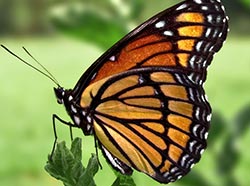
- Scavenger Hunt Activities – plan a nature scavenger hunt this summer. Use our scavenger hunt list, or make your own of objects to find in nature.
- Solar Oven from a Pizza Box – do a summer cookout with science style! Make hot dogs, grilled cheese, or even s’mores with this homemade solar oven.
- Solar Water Purifier – use heat from the sun to turn salt water into fresh water. It may seem like magic, but it works because of the scientific principle of evaporation.
- Sun Prints – Learn about UV rays as you make unique art pieces. The sun will fade the color from construction paper, leaving a print of objects you place on top of the paper.
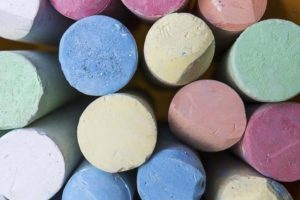 Sidewalk Shadows – Create a design on the sidewalk by tracing shadows! Pick a sunny day to do this project. All you’ll need is sidewalk chalk and a beach ball or umbrella.
Sidewalk Shadows – Create a design on the sidewalk by tracing shadows! Pick a sunny day to do this project. All you’ll need is sidewalk chalk and a beach ball or umbrella.- Crack Open a Geode + Video – learn how to safely crack open a geode to see if there are crystals inside!
- Make a Paper Flying Machine – you can make your glider inside, but its more fun to fly it outside! Test different designs to make the best paper flying machine.
- Launch a Bottle Rocket – Study Newton’s laws of motion as you build rockets that soar up to 150 feet.
- Make a Mushroom Spore Print – this art project teaches kids about fungi. Create a high impact nature print of white mushroom spores on black paper.
- Become a Human Sundial – use sidewalk chalk, a sunny day, and your own shadow in this project to learn about the rotation of the earth.

- Explore the Beach – next time you visit the seashore, be a beach scavenger! Use our printable coloring page and worksheet to study animals and plants that live near the ocean.
- Make a Rainbow – you can make a rainbow using light from the sun and water from a garden hose! Study light and color with this quick project.
- Water Glass Xylophone – show how sound travels through air and water using glasses filled with different levels of liquid. It’s the visible way of learning about sound waves! Set it up outside for easy clean up.
- Make a Terrarium – make a self-watering miniature garden! It’s easy to gather soil and rocks from your backyard, then keep the terrarium inside or out.
- Build Your Own Anemometer – make a homemade anemometer to measure wind speed. Track your weather results for several days to study wind power where you live.
- Make Quicksand – read all about quicksand and how it forms, and make your own non-Newtonian substance using cornstarch and water. Do this outside for easy cleanup.
Summer Science Projects To Do Indoors
If it’s cloudy or rainy, or you need a break from the sun, try one of these summer science projects to add some fun to your day!
- Quick Crystal Cup – grow needle-like crystals in just a few hours! Make a crystal growing solution out of water and Epsom salt. Stick it in the refrigerator and prepare to be amazed.
- Make Your Own Rock Candy – science you can eat? Perfect! Grow your own rock candy using sugar and water. The hardest part is waiting about one week until the crystals are ready to enjoy.
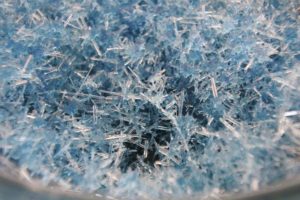
- Make Jell-O Play Dough – explore kitchen science with this recipe! The play dough is fully edible, and will last for weeks of squishing, rolling, and shaping fun.
- Homemade Butter – shake and roll whipping cream into fresh butter! This project is a lot of fun, and it teaches about the science of emulsion.
- Make a Rubber Ball – learn about polymers by making your own colorful bouncy ball! You’ll need household items like glue, borax, and cornstarch.
- Chromatography + Video – watch our video to see how to separate the colors from a black marker. You may be surprised!
- Make Invisible Ink – make three different kinds of invisible inks with this science project. Learn about chemical reactions, too.
- Elephant Toothpaste – use yeast and hydrogen peroxide in this spin-off of a classic chemistry experiment. Foam will come streaming out of a flask!
- Homemade Lava Lamp + Video – watch bubbles sink and rise, and learn about polar and non-polar substances with this cool experiment using household items.
- Dissect an Owl Pellet – what are owl pellets? Learn about birds, food chains, and more with this fascinating biology project the whole family will enjoy.
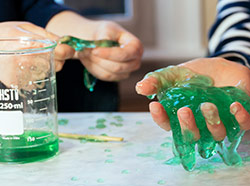
- Make Your Own Slime – see four different kid-tested recipes for making the best slime around. Make classic slime, oobleck, glooze, or transparent slime.
- Egg in a Bottle + Video – learn about the relation of temperature and pressure as you watch an egg get sucked into a bottle. See our video, then try it for yourself.
- Watch Seeds Grow – start plants indoors, and watch their roots form. You just need a few household items to see what happens beneath the soil when you plan a seed.
- Collapsing Styrofoam Cup + Video – use acetone to instantly melt a styrofoam cup! If you don’t have the materials right now, take a look at the video demonstration.
- Cartesian Diver – learn more about submarines and scuba divers with this mini diver that will go deep into the water, then rise back up. Discover buoyancy and liquid density.
- Make a Simple Motor + Video – see for yourself how the forces of electricity and magnetism can work together by building a motor using simple materials.
- DIY Sugar Scrub – make a sugar scrub, and learn how it benefits the skin. This spa science project also makes a great gift.
- Traveling Plant Roots – see how the roots of a plant take up water from the soil. You will need a carrot, water, and food coloring. You can also try this experiment with celery. Look for vegetables that have leaves attached.
- Homemade Whale Blubber – learn how animals like whales, seals, and penguins keep warm in freezing temperatures. Make homemade insulation and see if it works to block out cold.
- Make a Fossil Cast – demonstrate how fossils are made by using modeling clay and plaster of paris. You can turn any plant or toy animal into a fossil.
- Balloon Hovercraft – try this very simple project to create a floating disc that skims across a surface similar to the way an air hockey puck or hovercraft does.
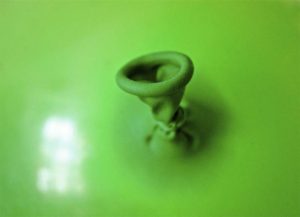
- Milk Carton Periscope – look forward but see behind you? It’s possible with a periscope. Build your own using a milk carton and two mirrors.
- Go on a Magnet Hunt – print out this worksheet to go on a magnet hunt around the house! This activity is perfect for rainy day fun.
- Make a Balloon Jet – learn about thrust with this super simple rocket. You will need some string, a straw, tape, and a balloon. Try it today!
- Explore Liquid Density – try out four different science projects that will teach you about liquid density. Why do objects that are the same size sometimes have different weights? Find out.
- Use a Chemical Reaction to Inflate a Balloon – all you need is yeast, sugar, and water to make a balloon inflate by using a chemical reaction. How big can you get your balloon to be using this method?

- Grow Stalactite Crystals – use Epsom salts to grow your own crystals similar to cave features! Plus, learn the difference between a stalactite and stalagmite.
- Homemade Ice Cream in a Bag – make a tasty treat in under an hour using our recipe for homemade ice cream. Get your friends to help with this hands-on project!
- Homemade Glue – learn about polymers by making your own glue using household items. Experiment to find the best mixture with the most adhesive power.





